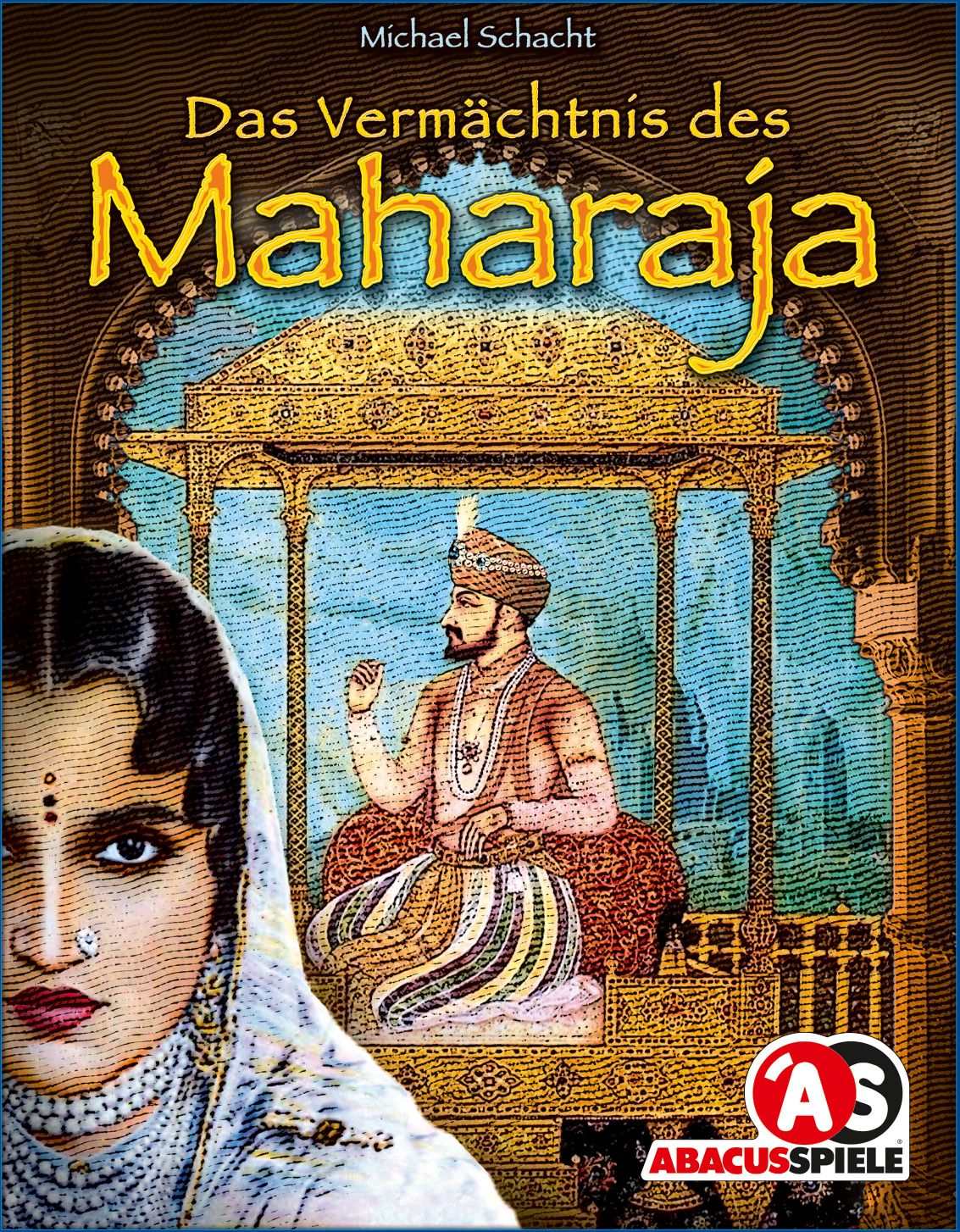Das Vermächtnis des Maharaja (2017)
Tiempo de Juego: 30
Edad Mínima: 10
Jugadores: 2 - 4
Editor: Games 4 Gamers, ABACUSSPIELE
Diseñadores: Michael Schacht
Artistas: Michael Schacht
Mecánicas: Set Collection, Open Drafting, Contracts, Hand Management, Move Through Deck
Edad Mínima: 10
Jugadores: 2 - 4
Editor: Games 4 Gamers, ABACUSSPIELE
Diseñadores: Michael Schacht
Artistas: Michael Schacht
Mecánicas: Set Collection, Open Drafting, Contracts, Hand Management, Move Through Deck
Mostrar Descripción Mostrar Comentarios Tendencia de Precios
You need to collect antiques in Das Vermächtnis Des Maharaja, a.k.a. Maharaja, but more than that you need proof that those antiques form a collection and aren't merely a hodgepodge of old trinkets.
To set up the game, shuffle the 36 antique cards (six types in six colors), lay out four on the table, give each player 4-5 rupees (depending on turn order), and lay out the fifteen collection cards. Place the trade cards — numbered 4-3-3-2-2 in a four-player game — on the table in a row, then place a gold coin worth 3 rupees on each trade card.
On a turn, a player either takes the leftmost gold coin from a trade card or pays the cost shown on the leftmost trade card bearing a coin to purchase one of the antique cards on display. After doing either of these, the player can claim a collection card as long as they own the antiques depicted on that card; many collection cards force you to discard one of the antiques depicted, which then sets you back toward claiming other collection cards. To end your turn, pay taxes so that you have at most 8 rupees. As soon as all the gold coins are claimed or the antique cards purchased, the round ends, after which you refill the trade cards and lay out four new antique cards.
Once the antique cards run out, the game ends and players discard any antique cards they hold if they have only one card of that color. Then they tally their scores based on their collection and antique cards and the money they still hold. Whoever has the most points wins.
To set up the game, shuffle the 36 antique cards (six types in six colors), lay out four on the table, give each player 4-5 rupees (depending on turn order), and lay out the fifteen collection cards. Place the trade cards — numbered 4-3-3-2-2 in a four-player game — on the table in a row, then place a gold coin worth 3 rupees on each trade card.
On a turn, a player either takes the leftmost gold coin from a trade card or pays the cost shown on the leftmost trade card bearing a coin to purchase one of the antique cards on display. After doing either of these, the player can claim a collection card as long as they own the antiques depicted on that card; many collection cards force you to discard one of the antiques depicted, which then sets you back toward claiming other collection cards. To end your turn, pay taxes so that you have at most 8 rupees. As soon as all the gold coins are claimed or the antique cards purchased, the round ends, after which you refill the trade cards and lay out four new antique cards.
Once the antique cards run out, the game ends and players discard any antique cards they hold if they have only one card of that color. Then they tally their scores based on their collection and antique cards and the money they still hold. Whoever has the most points wins.
Actualmente no tenemos datos de precios para este juego.
Este juego actualmente no se comercia en el mercado:
Este juego actualmente no está listado en el mercado. Si quieres vender el tuyo, por favor añádelo al mercado.
Mercado
El juego también se publicó con estos nombres:
El legado del Maharaja ,
Das Vermächtnis des Maharaja
Juegos Relacionados
ag.gameitem.lastUpdated: 2025-05-17 23:09:36.14

















